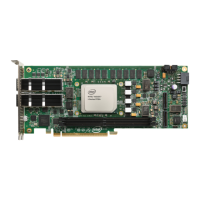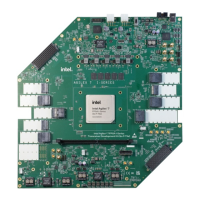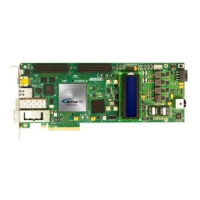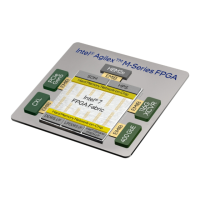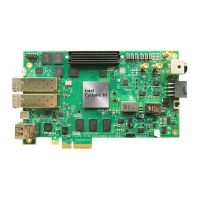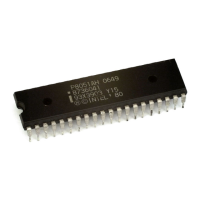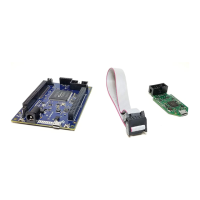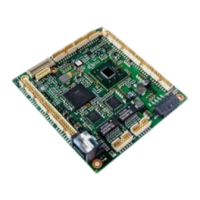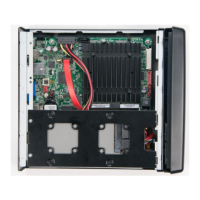3.1.2. 8 x 8 (unsigned) or 9 x 9 (signed) Sum of 4 Mode
The 8 x 8 (unsigned) or 9 x 9 sum of 4 mode uses the following equations:
resulta = (ax * ay)+(bx * by)+(cx * cy)+(dx * dy)
Figure 18. 9 × 9 Sum of 4
In this figure, the variables are defined as follows:
• n = 8 and m = 8 for 8 x 8 unsigned operands
• n = 9 and m = 9 for 9 x 9 signed operands
resulta[(63..0]
Multiplier
x
Multiplier
x
Input Register Bank
ay [(n-1)..0]
ax [(n-1)..0]
9
9
Variable-Precision DSP Block
by [(n-1)..0]
bx [(n-1)..0]
9
9
Output Register Bank
*1st Pipeline Register
*2nd Pipeline Register
*This block diagram shows the functional representation of the DSP block.
The pipeline registers are embedded within the various circuits of the DSP block.
x
x
Multiplier
Multiplier
+
+
+
cx [(n-1)..0]
cy [(n-1)..0]
dy [(n-1)..0]
dx [(n-1)..0]
9
9
9
9
Adder
Adder
Adder
3.1.3. Multiplier Adder Sum Mode
The multiplier adder sum mode uses the equations:
• resulta = (bx * by) + (ax * ay) to calculate the sum of the two 18 x 19
multiplications.
• resulta = (bx * by) - (ax * ay) to calculate the difference of the two 18 x 19
multiplications.
3. Intel Agilex Variable Precision DSP Blocks Operational Modes
UG-20213 | 2019.04.02
Intel
®
Agilex
™
Variable Precision DSP Blocks User Guide
Send Feedback
34

